Hair transplantation is a popular and safe procedure used to restore hair loss and baldness. It involves taking hair from the donor area, usually the back and sides of the scalp, and transplanting it to the balding or thinning areas. It is a long-term solution for hair loss, and it has helped many individuals achieve a fuller head of hair. However, just like any other medical procedure, there are risks associated with hair transplantation. In this article, we will be discussing the risks and complications associated with hair transplantation, as well as how to reduce the risk of experiencing them.
What is a Hair Transplant?
A hair transplant is a minimally invasive procedure used to restore hair loss and baldness. During the procedure, a doctor will take healthy hairs from the donor area, usually the back and sides of the scalp, and transplant them to the balding or thinning areas of the scalp. The transplanted hairs will then grow as normal and will last for a lifetime.
Hair transplantation is a safe and effective procedure, but it is important to understand the risks associated with the procedure before undergoing it. It is also important to choose a qualified doctor who is experienced in the procedure.
Hair transplantation has complications such as pain and bleeding, infection, scars and scars, etc. Most of the side effects are preventable or temporary and can be easily treated if they occur.
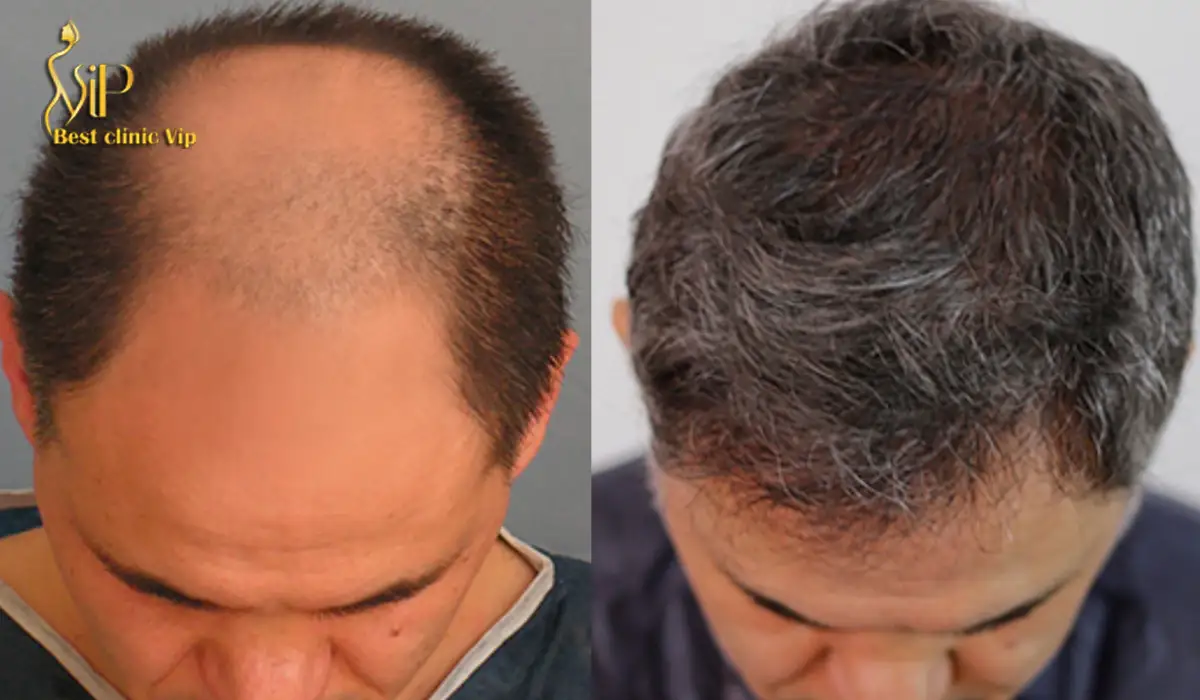
Hair transplantation
Is Hair Transplant Safe?
Hair transplantation is generally considered a safe procedure. However, there are risks associated with it, and it is important to be aware of these risks before undergoing the procedure. As with any medical procedure, complications can occur. The most common risks associated with hair transplants are infection, swelling, and scarring.
Choosing a good surgeon and following the necessary care after the operation greatly reduces the chance of complications.
Who is Suitable for a Hair Transplant?
Hair transplants can be beneficial for individuals with male or female pattern baldness. Individuals with other types of hair loss may also be suitable for hair transplantation.
Who is Not Suitable for a Hair Transplant?
Individuals with certain medical conditions, such as diabetes or autoimmune disorders, may not be suitable for hair transplantation.
It is important to discuss the risks and benefits of the procedure with your doctor before undergoing the procedure to determine if it is the best option for you.
Risks associated with hair transplants
It is important to be aware of the risks associated with hair transplants before undergoing the procedure. The most common risks include infection, swelling, scarring, and numbness. Additionally, there is a risk of poor hair growth or even loss of the transplanted hair.
effects after hair implantation and ways to prevent them
Hair transplantation has complications such as pain and bleeding, infection, scars and scars, etc. Most of the side effects are preventable or temporary and can be easily treated if they occur. Choosing a good surgeon and following the necessary care after the operation greatly reduces the chance of effects.
Many people, especially men, use a variety of hair transplant methods to compensate for hair loss and baldness. In the hair transplant operation, the surgeon transfers hair follicles from a part of the head or body to the part where baldness has occurred. Although hair transplantation seems to be a simple procedure, it has effects like any other surgery. Are you familiar with the effects of hair transplantation? Does hair implantation hurt? Will we face hair loss after implantation?
Consultation with a dermatologist and hair specialist at Doctor TO (your doctor) will inform you about the effects after hair transplantation. You can communicate with the best skin, hair, and beauty specialists by phone and online through your doctor and receive the necessary guidance from them. Also, if you need to visit in person, you can get an appointment from the appointment section of the office.
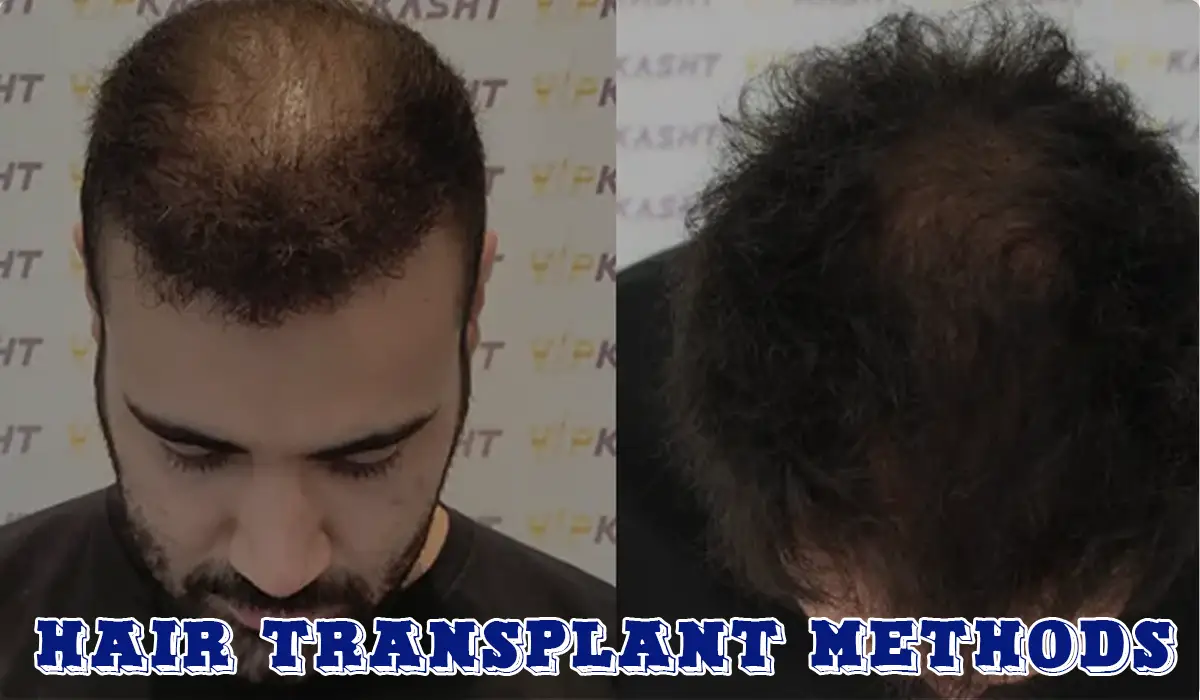
hair transplant methods
Effects after hair implantation
Although the causes of hair loss are very diverse, many people who go for hair implantation are facing baldness or alopecia. This can happen to anyone and more importantly at any age.
Hair implantation has been helping men and women achieve a new look for years. Compared to other cosmetic surgery methods, hair implantation has few side effects, but if not paid enough attention, it can cause serious side effects. There is a wide range of possible effects of hair implantation, which we will examine below:
1. Pain is one of the most common side effects of hair implantation
Postoperative pain occurs in most patients after hair transplant surgery. This pain is especially greater in FUT (follicular unit transplant) hair transplantation. In this type of surgery, the strip removal method is used. Strip removal increases the possibility of damage to peripheral nerves. Therefore, the pain after the hair implantation operation in this way is greater than other methods.
In the FUE (follicular unit extraction) method, an average of 3,000 hair units are removed and transplanted over the course of 6 to 8 hours. Muscle pain may occur during this period depending on the lying position. Small breaks should be taken during the process to prevent and reduce pain. Also, to reduce pain, the doctor can use painkillers.
2. Edema or swelling, the most common complication of hair transplantation
Edema (swelling) after surgery is the most common complication of hair transplantation. The average incidence of edema after a hair transplant varies from 40 to 50%. Edema can occur due to anesthesia and trauma during the procedure. The swelling of the tissue starts at the time of surgery, but 3 to 5 days later the hair transplant procedure shows itself. Sometimes, the edematous fluid moves into the peri-ocular tissues and causes peri-ocular hemorrhage. Also, in some cases, this edema is so severe that the patient cannot open his eyes.
To prevent and minimize swelling, patients should lie down and sleep in a certain way after the operation. The use of massage, cold compresses, systemic steroids, infiltrating steroids, and non-steroidal anti-inflammatory drugs can reduce edema.
3. Bleeding is another side effect of hair implantation
The scalp, whether hairy or bald, has many blood vessels, but the bleeding rate is surprisingly low. In less common cases, bleeding occurs after the patient leaves the clinic. Applying pressure for 15 minutes with clean gauze is very effective to reduce bleeding.
During the preoperative evaluation, the patient should be screened for bleeding and coagulation disorders, aspirin use, nonsteroidal anti-inflammatory drugs, vitamin E, alcohol, anabolic steroids, or other anticoagulant agents. The use of topical minoxidil and smoking should be stopped at least 2 weeks before surgery. Intraoperative bleeding at the recipient site is not uncommon and can usually be minimized by injecting swelling solutions containing epinephrine.

the most important causes of hair loss in men
4. Asymmetry in hair implantation
The main causes of hair transplant asymmetry are:
- False front hairline design
- The density difference between the right and left frequency
- Changing the previous shape of the head.
Doctors should always check their design marks in the mirror, behind the head, and at the level of the patient’s eyes and get their approval before hair transplant.
5. Folliculitis one of the effect of hair implantation
Folliculitis is a term used to describe inflammation of the hair follicle in response to infection, physical injury, or chemical exposure. The incidence of folliculitis after hair implantation varies from 1.1 to 20%, and its severity varies from mild and superficial inflammation with mild erythema and scattered pimples.
Infection can occur in the recipient or donor area. The treatment of folliculitis depends on its cause. When a mild folliculitis begins 2 to 3 months after surgery, hair growth is the likely cause. In such cases, initial treatment includes a warm compress for 15 minutes, three times a day, and a topical antibiotic ointment such as mupirocin.
6. Flaking from the disadvantages of hair implantation
Flaking on the surface of the dry epidermis usually occurs 24 to 48 hours after hair implantation. The peeling crust usually disappears after 7 to 10 days.
Shells do not affect graft survival or the healing process unless they are left on for a long time. You can remove these scales after 48 hours of hair implantation by washing them first. Also, using a moisturizer about 30 to 45 minutes before washing will help. If the crusts are still present after 9 to 10 days after the operation, you should use a wet compress or steam.
7. Visible scars
Scars are also in the list of hair implantation effects. There are a few implantation cases where some people are more prone to scarring than others. Scarring is especially common in cases where patients have chosen the strip hair implantation procedure. With proper medical treatment, this is one of the effects of hair implantation that can be easily treated.
A visible scar in the donor area (usually the back of the head) is the most common effect that patients face in some hair implantation procedures. FUT hair implantation can create a linear scar in the donor area. Scarring may also occur in the FUE procedure. This effect occurs when the punch is repeatedly inserted.
8. Implantation Displacement
Displacement of the graft (hair bank) usually happens in the first 3 days after the hair implantation operation. Direct impact is the main cause of implantation displacement. Grafts do not survive long in the external environment.
When trauma or similar causes occur, graft displacement should be replaced as soon as possible. Patients can store implantation in contact lens solution, saline, or saline for a short period to prevent the implantation from drying out.
9. Hiccups from hair implantation effects
Hiccups are one of the less common side effects of hair implantation. Hiccups have been reported in 4% of hair implantation cases. Hiccups are observed during the operation or shortly after the operation.
10. Effluvium hair loss (shock after hair implantation)
Excessive loss of non-grafted hair in the recipient area is called shock loss or effluvium. Effluvium can be anagen or telogen. Effluvium usually occurs 3 to 4 weeks after implantation. This effluvium can be due to direct trauma to existing hair follicles during incision, excessive edema, and vascular trauma during incision.
The role of adrenaline in effluvium is not clear. Using minoxidil solution helps to regrow hair, but without taking this medicine, hair grows again after 3 to 4 months. In this case, the patient should be counseled and patients should be informed about the possibility of effluvium before hair implantation.
The transplanted hair usually falls out within 3 to 4 weeks after the implantation. This anagen effluvium is due to the acute interruption of vascular supply during the implantation process of donor hair follicles.
11. Donor hair effluvium
Hair effluvium is a fairly common occurrence in the recipient area, especially in women, while it is significantly less common in the donor area. These effects of hair implantation usually occur within 6 weeks after surgery as temporary hair loss along the lower and upper margins of the linear wounds. Also, hair effluvium can appear as diffuse hair loss during FUE implantation surgery.
Most likely, this effect occurs in response to the interruption of blood flow. Patients should be reassured that the problem will resolve on its own within
3 to 4 months, but minoxidil can accelerate hair regrowth.
Normal hair loss can be seen in both recipient and donor areas about 4 to 6 weeks after surgery, and it usually heals itself in the next 3 to 4 months.
-
12. Itching from hair implantation effects
Sometimes itching is observed after hair implantation in the donor and recipient area. The wound-healing process may be the main cause of this problem. Another reason may be the use of minoxidil after hair implantation. Depending on the frequency of use and concentration, minoxidil can cause scalp irritation. Topical steroids or antihistamines are recommended for the treatment of many patients.
13. Scalp numbness after hair implantation
Temporary loss of sensation always occurs temporarily in the donor and recipient areas. This numbness is the result of the nerves being cut by the punch. Patients usually notice this but rarely complain about it.
This problem will be resolved in a period of 6 to 12 months after the effect of the operation.
14. Hypertrophic scar or keloid
Keloid and hypertrophic scars are rare effects of hair implantation. The incidence of keloid and hypertrophic scars has been reported in only 0.1% of hair implantation cases. These effects indicate an abnormal response to skin damage characterized by excessive collagen deposition. A keloid scar usually develops months or years after surgery and continues indefinitely. People with a history of keloid scars are not candidates for hair implantation surgery. Those who are at risk for developing keloids due to ethnicity or age, or who have a personal history of hypertrophic scarring, should be aware of the potential for abnormal scarring.
-
15. Arteriovenous fistula
An arteriovenous fistula is a rare effect of punch hair implantation. This effect was observed after hair implantation with a large punch, especially in the temporal region in the 1970s.
Many patients may notice a pulsatile subcutaneous mass with excitement and symptoms such as pain or headache along with an arteriovenous fistula. Angiography is necessary to fully diagnose and evaluate this disease.
Clinical findings show that this effect caused by hair implantation usually resolves itself within 6 months, but if the surgeon is concerned about vessel rupture or cosmetic appearance, he can close the superficial vessels.
16. Infection after hair implantation
Scalp infection is very rare. Serious infections occur in less than 1% of cases and are usually associated with poor hygiene, excessive crusting, or preexisting medical risk factors. There are several measures to prevent and control infection after hair transplant, such as:
- Clean and disinfect the operating room
- Use of sterile materials
- Asepsis of the donor area
- Use of disposable tools
- Antibiotic prescription.
17. Pavement appearance
The cobblestone appearance occurs when follicular units are implanted at the wrong depth in holes or gaps that are too small.
18. faint
Sometimes, very nervous patients faint or feel weak during the procedure, but this can be controlled by simple measures such as lowering the head between the knees or placing the patient in a prone position.
19. Change in skin pigmentation is one of the side effects of hair implantation
Skin pigmentation changes may appear after hair implantation. This effect is more common in FUE scars than tape removal (FUT) scars. Good work quality, sharp punch, and avoiding excessive harvesting of grafts can reduce the incidence of hyperpigmentation of scars.
The implanted area should not be exposed to sunlight for at least 1 month after hair implantation. To prevent these side effects after hair implantation, it is recommended to wear a hat (for men) or a scarf (for women).
20. Necrosis after hair implantation
Recipient site necrosis is a rare but dangerous effect. This effect occurs when a large number of recipient grafts are used for implantation. When many grafts are implanted, the scalp vessels become scarred as a result of the dense splitting of the recipient’s skin over a large area. According to Intechopen, the following factors increase the likelihood of skin necrosis:
Patient-related factors: smoking, atrophic skin damage, diabetes mellitus, scar at the recipient site, or history of scalp surgery.
Technical factors: dense packing, creation of large openings, use of anesthetic or swelling solutions with a high concentration of epinephrine, and deep incisions of the recipient.
Treatment of central receptor site necrosis focuses on removing dead wound tissue and cultivating a viable wound foundation. To treat these side effects of hair transplant, it is recommended to use Mupirocin ointment twice a day. Sometimes, in cases where we are faced with extensive necrosis, it may be necessary to expand the scalp for repair. In the treatment of tissue necrosis, hair implantation can be done after tissue necrosis has healed.
21. Subcutaneous cysts
Cysts are pimple-sized bumps that rarely become malignant. Cysts is also one of the main side effects of hair implantation. If the patient has experienced damage to the scalp due to the pressing of hair follicles deep into the layers, they may suffer from cyst formation. Cysts are easily treatable, but for this one should seek appropriate medical advice for cysts.
22. Hair thinning
Thinning and thinning of the hair again is a fairly common side effect of hair implantation. This phenomenon combined with hair loss can occur immediately after a successful surgery.
23. Anaphylaxis shock
Any patient who develops early swelling of the face with or without hives should be considered for an allergic reaction. There may be difficulty in breathing and low blood pressure. Common medications used in the postoperative period that may cause allergic reactions include antibiotics, non-steroidal anti-inflammatory drugs, povidone-iodine, neuromuscular blocking agents, etc. Allergic reactions to local anesthetics are very rare. Antihistamines are the drug of choice in acute urticaria. However, they are relatively slow. The anti-inflammatory effect of steroids helps to relieve symptoms more quickly.
24. Damage to the donor area due to excessive harvesting of grafts
If the doctor removes too many strands from the hair bank, the hair may be permanently damaged. Also, the hair may become sparse and fall out in the form of coins. To prevent this complication, it is recommended not to remove more than a quarter of the follicles in the hair bank.
To prevent effects and treat them faster, it is better to consult a skin and hair doctor at Doctor To (your doctor).
What are the effects of FUT hair implantation?
According to NCBI.nlm.nih, the complications of FUT hair transplant are:
- Bleeding
- folliculitis
- infection
- Fracture or wound necrosis
- numb
- constant pain
- Pain after surgery
- Suture extrusion
- Keloid and hypertrophic scars
- Donor hair effluvium
- hiccups
- Arteriovenous fistula.

FUT hair transplant
What are the effects of FUE hair implantation?
The effects after FUE hair implantation are as follows:
- emptying of the donation site ( Butterflied Appearance)
- Hyperpigmentation (scars with dots)
- Acute effluvium
- Buried links
- Keloid and hypertrophic scars
- Epithelial cyst
- necrosis
- Over withdrawal
- Numbness and constant pain
- Graft harvesting outside the safe zone.
What are the effects of the recipient area?
The side effects of the recipient area after hair implantation are:
- Weak hairline
- Abnormal appearance with low-density
- Edema of the recipient area
- necrosis
- folliculitis
- Cyst
What are the early effects and late implantation of hair implantation?
The early effects of hair implantation include:
- The pain
- Itching
- Bleeding
- Swelling
- Numb
- Infection
The late effects of hair implantation are as follows:
- Hair loss
- Inflammation of the follicle (folliculitis)
- Remaining scars.
What are the methods of preventing effects after hair implantation?
There is no special prevention method to prevent effects after hair implantation, and only you should take care of your hair after this surgery. for example:
Driving: Sometimes, hair restoration is done under strong sedation. If you have been given a sedative, you should not drive for the next 24 hours.
Sleeping position: To reduce the risk of swelling, it is essential to sleep with your head elevated for the first seven days after treatment.
Use of ice compresses: The key to treating swelling injuries is rest, ice, compression, and elevation. If you experience swelling, we strongly recommend placing ice directly above your eyebrows for 20-30 minutes. This is also a great preventative measure.
Hair washing: Do not wash your hair in the first 48 hours after hair implantation. On the third day after the treatment, you can wash your hair gently. Do not wash your hair vigorously until the fifth day after treatment. Also, do not spray the stream of water directly on your scalp. Instead, use a cup to wash your head. If you suffer from itching, you can gently apply a conditioner to your scalp.
Hair dyeing: You cannot dye your hair until one month after the hair implantation. If you feel that you cannot go four weeks without dyeing your hair, please dye your hair before the implantation. There are no negative side effects associated with coloring your hair shortly before the hair implantation procedure, but afterward, the harsh chemicals in the hair dye can compromise the success of the transplanted follicles.
Drink water: We all know that water is very important to life, but not everyone knows that hydration before and after your transplant is just as important. The more hydrated you are, the more comfortable you will be and the faster you will recover. You will also experience fewer effects after implantation.
Post-transplant hair loss: Many people think that their hair will not fall out after a hair implantation, but this is a completely normal and healthy part of your hair’s natural growth cycle. Approximately 10-15% of your hair is in the shedding phase at any given time. If you notice shedding in the first two to four weeks after treatment, don’t panic at all! Because your follicles are not damaged. Within three months, new hair will grow from those follicles stronger, healthier, and thicker than ever.
Don’t sleep on your stomach: Many of us sleep on our stomachs or turn over at night. However, you should be careful not to sleep on your stomach or side or touch your new hairline on pillows for the first week after treatment. This may cause hair loss.
You can minimize the possibility of effects after hair implantation by taking the above precautions.
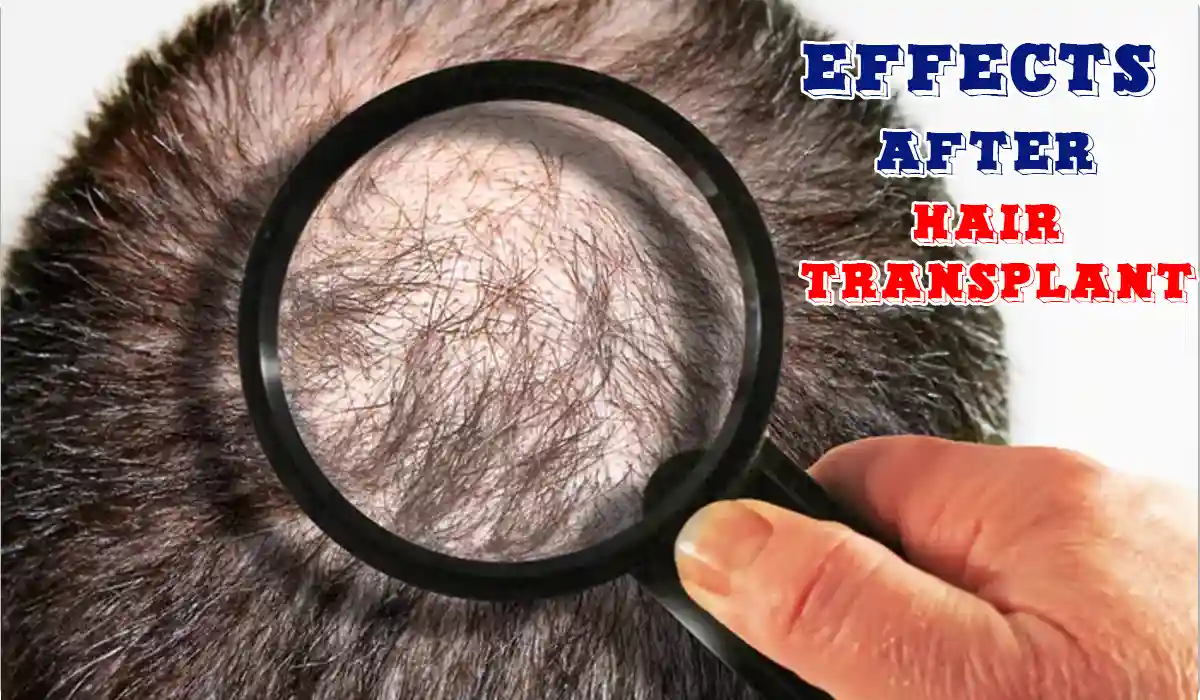
the effect after hair transplant
Should we avoid hair implantation due to its effects?
Hair implantation is a safe and popular option for people with a receding hairline. But are you a good candidate for hair implantation? What factors may prevent you from doing this? Should we give up hair implantation because of possible side effects?
Our suggestion is to be more careful in your hair care routine and try other methods of hair loss treatment before you go for invasive methods such as hair implantation.
There are many methods for treating hair loss in women and treating hair loss in men that treat this condition with fewer effects.
But if you tried these methods and did not get results, and the doctor suggested hair implantation for you, don’t be afraid of hair implantation. The side effects of hair implantation are not certain and do not happen to all people.
In general, the following people are not suitable for hair implantation:
- Patients who already have much less hair on their scalp and therefore much less hair can be removed.
- People who are prone to developing keloid scars or have a history of it.
- People who have lost their hair due to chemotherapy.
When should we see a doctor for hair implantation effects?
Whenever you notice symptoms and changes in your scalp or hair after the operation, you should visit a dermatologist, or hair and beauty specialist. Any shortcomings in this field can cause irreparable consequences.
You can have phone or online consultations with the best skin and hair specialist through Doctor To (your doctor) and get enough information from them. Also, if needed, you can set up an in-person appointment from the appointment section of the office.
Your frequently asked questions
Hair implantation is one of the most popular cosmetic surgeries, which can lead to many complications if performed incorrectly. In the following, we will examine your frequently asked questions regarding the effects of hair implantation. If you have a question that you did not find an answer to in this article, please comment on your question at the end of this article so that our experts will answer it as soon as possible.
What are the side effects of smoking after hair implantation?
Smoking after hair implantation hurts blood circulation and prevents the hair follicles from receiving enough oxygen, thus causing their death. This is because nicotine constricts your blood vessels, and carbon monoxide also reduces the blood’s ability to carry oxygen.
Is emptying the hair bank one of the side effects of hair implantation?
If too many grafts are harvested, the hair bank may begin to empty. Therefore, the emptying of the hair bank can be one of the effects after hair implantation.
What are the side effects of bad hair implantation?
If your hair implantation is not done correctly and by an experienced specialist, the possibility of complications increases greatly. The creation of scar tissue that does not disappear is one of these effects.
How to sleep after hair implantation?
For at least a week after surgery, sleep with your head and back slightly elevated, preferably on a single sofa. The first three to four nights have the greatest risk of swelling. Sleeping in an elevated position keeps the swelling of your scalp and forehead under control and speeds up recovery. If you are lying on your back, place your head on a soft pillow and avoid tossing or turning, as this can loosen your ligaments. If you are used to sleeping on your stomach, avoid doing so to prevent swelling after the operation.
How many days after planting can we wash our hair naturally?
You cannot wash your hair for at least two days after hair implantation. On the third day after the treatment, you should wash your hair gently using a serum or a cup. After five days, you can wash your hair naturally, but you still shouldn’t put pressure on your hair.
Is scalp infection one of the side effects of hair implantation?
Yes. If the disinfection steps during and after the operation are not done correctly, the scalp may get infected.
What are the signs of infection after hair implantation?
Symptoms of hair implantation infection can include:
- 1. Abscess full of pus
- 2. Suppuration
- 3. Redness or discoloration
- 4. Swelling
- 5. The pain
- 6. Itching
- 7. Burning
- 8. Bleeding
- 9. A feeling of warmth at the site of the operation.
Is itching a side effect of hair implantation?
Postoperative itching is a common phenomenon in the donor and recipient areas. Dryness and scaling are the cause of this itching. Washing the head from the third day and topical application of aloe vera or oil helps to effectively control itching. The use of oral antihistamines plays a small role. If itching remains uncontrolled, a topical steroid solution can be used for a short time.
Is it possible that hair does not grow after hair implantation?
While in most cases the patient grows hair in the recipient area within a few months, there are cases where no new hair grows or the growth is only patchy. In such cases, the patient has to do the whole procedure again.

treating hair loss in men
Does hair implantation surgery cause scars?
Whenever human skin is cut, it heals itself through a process called fibrosis, commonly known as scarring. The healing areas around the implanted hair are very small. They are almost undetectable even upon close inspection.
The amount of scarring in the donor or recipient area depends on various factors, such as:
- 1. The patient’s body’s ability to heal
- 2. The surgeon’s skill in transplanting
- 3. The technique used in hair implantation.
What are the opinions of those who have done hair implantation?
You can find out about the opinions of users about doctors and their experience with hair transplants in Doctor To (your doctor). We at Doctor To (your doctor) will be very pleased if you share your hair implantation experience with us and other users.
Conclusion and guide to see a Doctor
Hair implantation, like any other procedure, can have side effects. Effects such as scar tissue and scars, infection, hair loss, itching, etc. Most of these hair implantation effects are avoidable. A careful examination of the donor area and the recipient area taking a detailed history of the patient and of course choosing the best surgeon can greatly reduce the effects. All in all, hair implantation is a relatively safe procedure with most of the side effects being temporary and disappearing over some time. Although there is a possibility of long-term effects, the incidence rate is less.
Not to mention, choosing the right dermatologist, or hair beauty specialist, reduces the risk of effects after hair implantation. You can get to know the best hair implantation doctor at Doctor To (your doctor), check the opinions and experiences of patients about doctors, and consult with different doctors about the best hair implantation method or the least effects.
In Best VIP clinic, hair transplantation is done with the latest methods and the latest technology. In the SUT method, unlike the FIT or FUT methods, more than 14,000 hairs can be removed and implanted in one session. Embryo removal in this method is done with a device that is without surgery, pain, without anesthesia, and also has no recovery period or side effects.
What Are the Long-Term Hair Transplant Complications?
Long-term complications of hair transplants are rare, but they can occur. These complications can include infection, scarring, and poor hair growth. Additionally, there is a risk of nerve damage in the donor or recipient area. It is important to discuss the risks and benefits of the procedure with your doctor before undergoing the procedure.
Hair transplantation is generally a safe and successful procedure. However, it is important to be aware of the risks associated with the procedure before undergoing it. It is also important to choose a qualified doctor who is experienced in the procedure. By taking these steps, you can reduce the risk of complications after hair transplantation.
Treating Hair Transplant Complications
If complications do occur after hair transplantation, it is important to seek medical attention immediately. Treatment for complications will vary depending on the type and severity of the complication. In some cases, medications or other treatments may be necessary to reduce the risk of complications.
How to Reduce the Risk of Hair Transplant Complications
There are a few steps you can take to reduce the risk of complications after hair transplantation. It is important to choose a qualified doctor who is experienced in the procedure. It is also important to follow all pre and post-operative instructions given by your doctor. Additionally, it is important to keep the surgical area clean and dry to reduce the risk of infection.
Choosing the right dermatologist, and hair beauty specialist reduces the risk of complications after hair transplantation. You can get to know our hair transplant doctors in Best VIP Clinic and check the opinions and experiences of patients about doctors.
Is Hair Transplant Safe for Diabetics?
Diabetics may be at an increased risk for complications from hair transplantation. There are a few factors that can increase the risk of complications in diabetics, such as poor blood sugar control and the use of certain medications. Individuals with diabetes need to discuss the risks of hair transplantation with their doctor before undergoing the procedure.
Choosing the right dermatologist, or hair beauty specialist, reduces the risk of complications after hair transplantation. You can get to know our hair transplant doctors in Best VIP Clinic, and check the opinions and experiences of patients about doctors.
FAQ
Is Hair Transplant Safe and Successful?
Hair transplantation is generally considered a safe and successful procedure. However, as with any medical procedure, there are risks associated with it. The most common risks associated with hair transplants are infection, swelling, and scarring. It is important to discuss the risks of hair transplantation with your doctor before undergoing the procedure.
Is Hair Transplant Safe in Turkey and India?
Hair transplantation is generally considered a safe procedure in Turkey and India. However, it is important to be aware of the risks associated with the procedure before undergoing it. It is also important to choose a qualified doctor who is experienced in the procedure
A hair transplant can be a great option for those suffering from hair loss. However, it is important to understand that the procedure can be painful. The amount of pain you experience will depend on the type of procedure you choose and the skill of the surgeon. It is important to choose a qualified and experienced surgeon and to discuss any potential risks and complications with your surgeon before undergoing the procedure. Have you experienced a hair transplant? Did you feel any pain during or after the hair transplant procedure? Please share your experiences with us in the comments below this post!

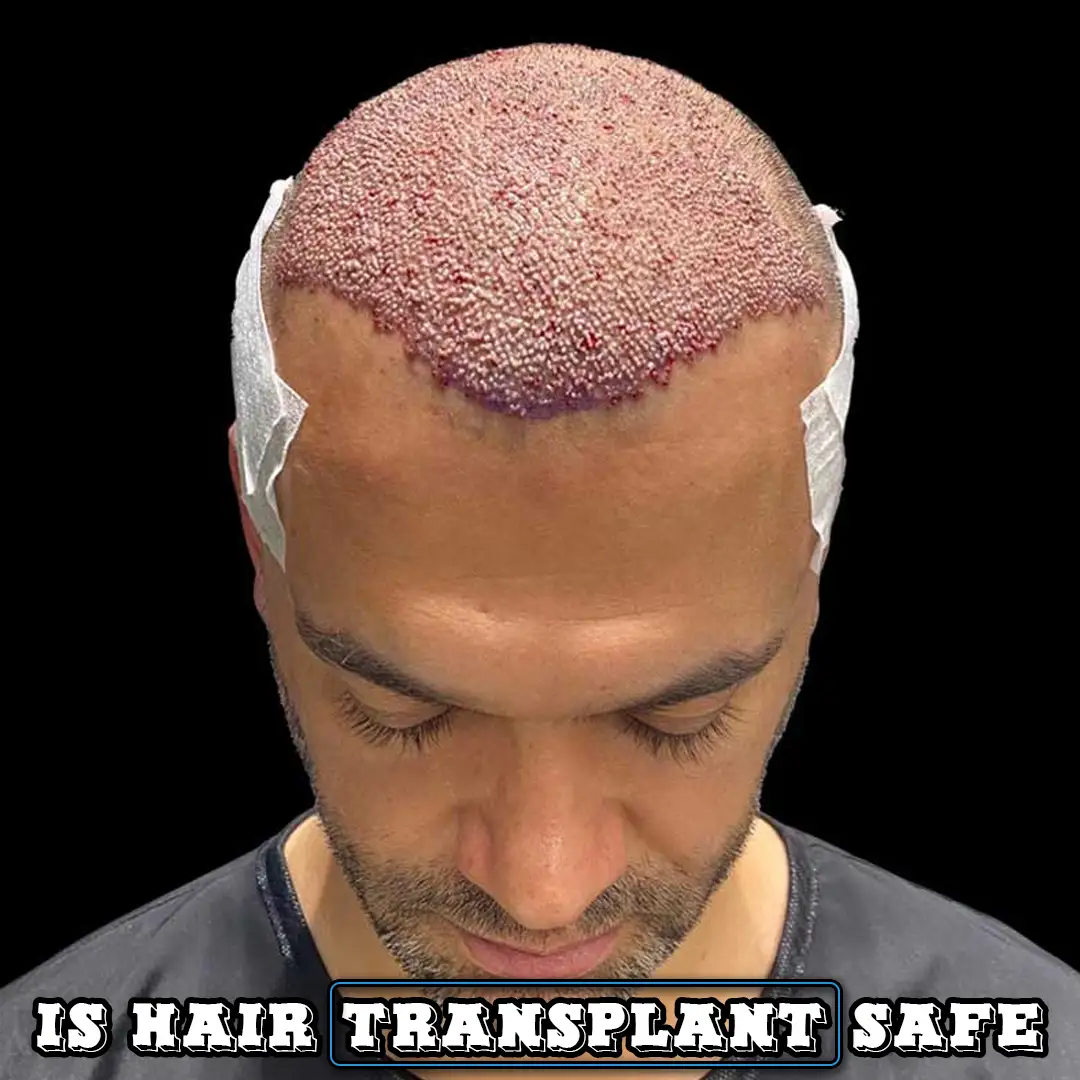


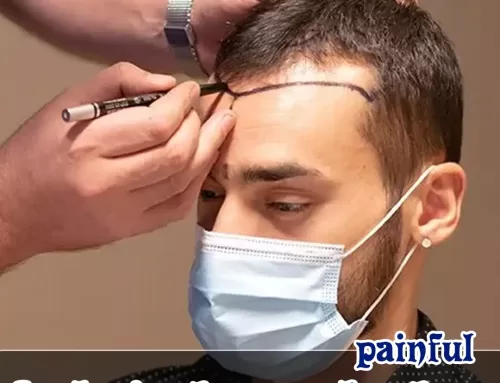
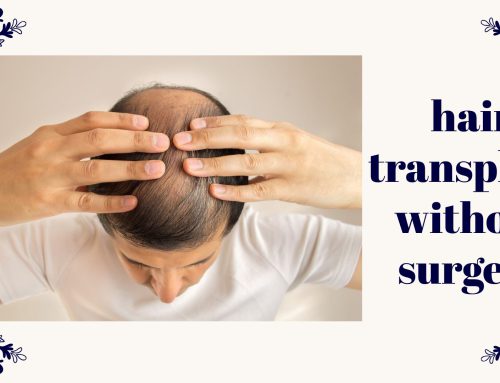
Leave A Comment